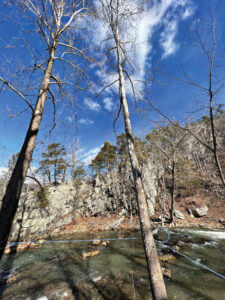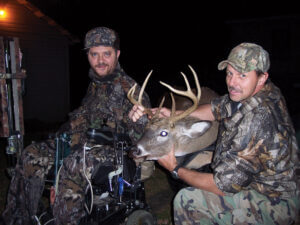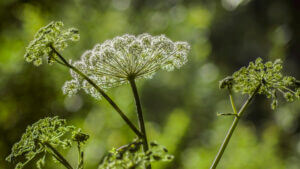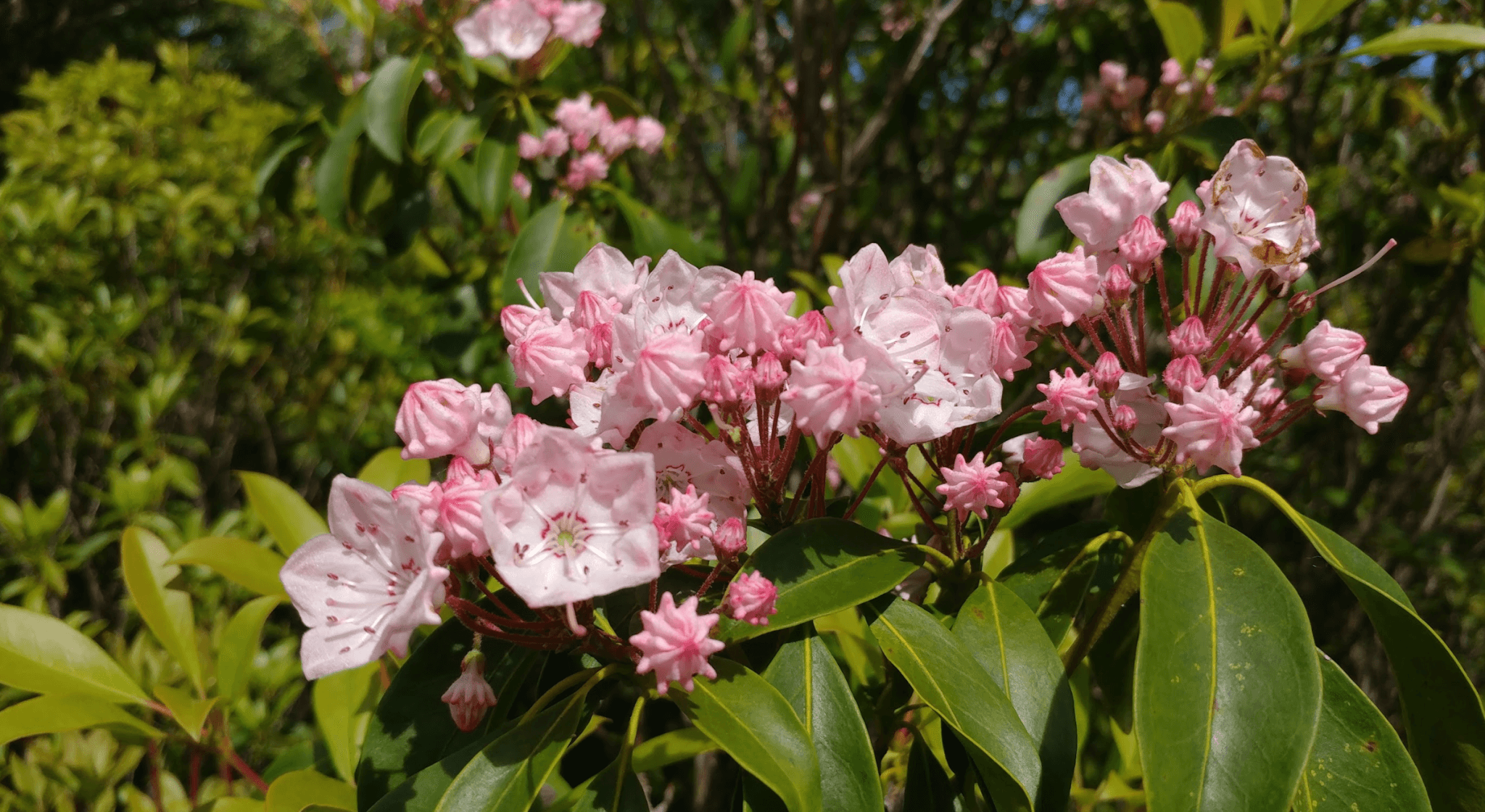
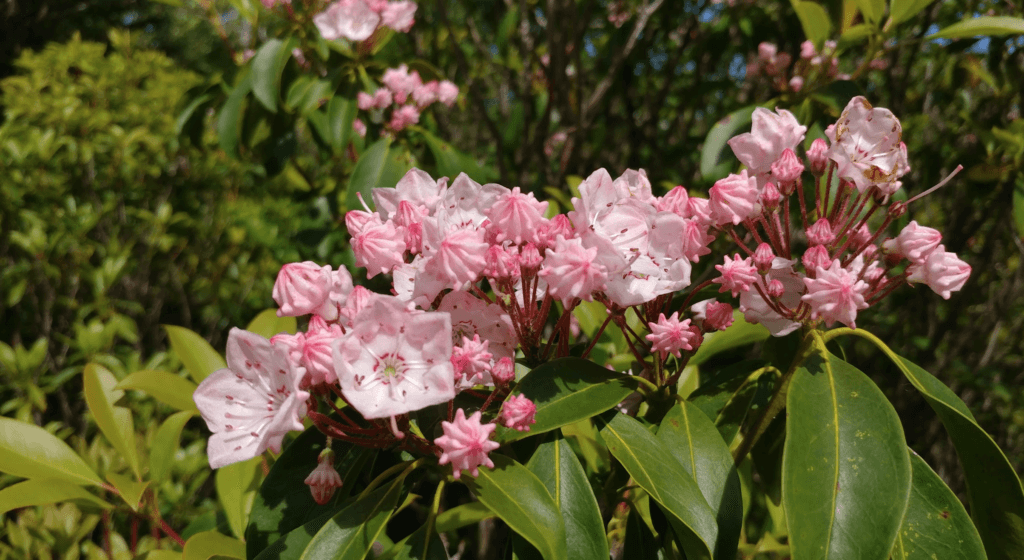
Mountain Laurel is often planted in groups as a border or screen. Ruffed grouse will eat the leaves and tips of branches.
The Wild Yards Program helps West Virginians create habitat for native species.
This story was originally published in the April 2022 issue of Wonderful West Virginia. To subscribe, visit wonderfulwv.com
Written by Wendy Holdren
What’s in a West Virginia backyard? According to the Division of Natural Resources, the answer might be pretty wild. A yard can be a thriving habitat for a host of Mountain State species—but what often stands in the way of healthy wildlife habitat is the most ubiquitous crop grown in the United States: the lawn.
Beyond its tranquil, manicured appearance, an expanse of neatly mowed grass serves little purpose. In fact, the keeping of lawns does more harm than good to the environment. Gas-powered lawn equipment emits carbon dioxide and cancer-causing pollutants and contributes to smog. Chemicals like pesticides and herbicides can be dangerous to both wildlife and humans. And Americans spend endless time and money on lawn care each year.
DNR Wildlife Biologist Jim Fregonara is working to change that with the West Virginia Wild Yards Program. “We’re trying to get people away from those really big, manicured lawns,” he says. “They may look pretty, but they’re really not good for wildlife.” By thinking of their yards as ecosystems rather than as showpieces, residents can be inspired to make relatively small changes to their yards that provide habitat where West Virginia wildlife will thrive.
Begun in the 1990s through the DNR’s Wildlife Diversity Program, the West Virginia Wild Yards Program was designed to encourage wildlife and native species in yards around the state. While the idea of a wild backyard may be foreign to many property owners, the National Wildlife Federation estimates that landscaping for wildlife can increase a property’s value by as much as 10%. At the same time, reducing a lawn’s square footage means a reduction in lawn care costs, including water.
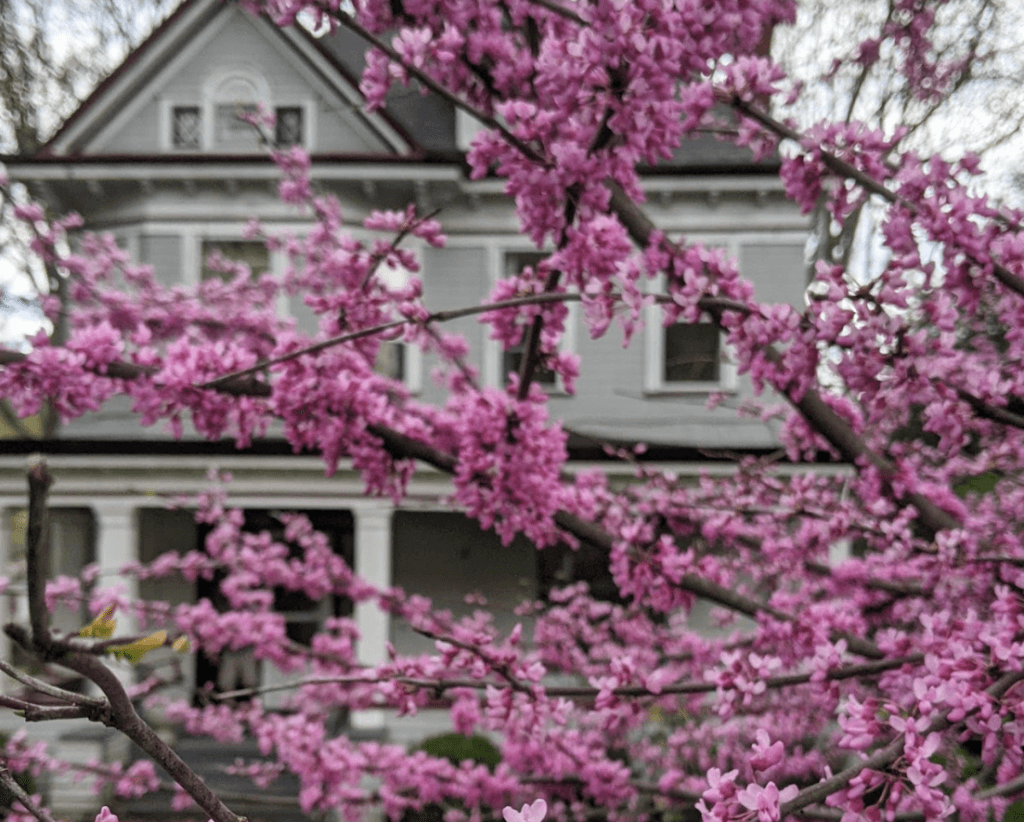
The native redbud grows 10-30 feet and does well in backyard habitats. Its flowers are edible and sweet, attracting pollinators like bees.
Any resident who presents a qualified habitat plan to the DNR can receive an attractive yard sign signaling the property’s designation as a certified Wild Yard—and there are even ways to participate if you live in an apartment.
Four Essentials
Program applicants need to demonstrate how they will provide wildlife with four components: space, shelter, food, and water, all of which can be easy to create. “A lot of people think that, if you’re going to landscape for wildlife, you have to have hundreds and hundreds of acres,” Fregonara says of the space requirement. “That’s fine if you do, but most people don’t. You can have a small yard. It doesn’t have to be huge amounts of property.”
Nor do property owners have to make major changes. The water requirement may be filled by an existing stream or pond, and feeding wildlife can be as simple as hanging a bird feeder and putting a corn cob on a nail for squirrels. Apartment dwellers can set up porch or patio bird baths, mount nest boxes, and hang suet cakes. Fregonara recommends black oil sunflower seeds over bird seed mixes that contain millet and wheat seeds—many birds don’t eat these components and toss them on the ground, which in turn can attract rodents.
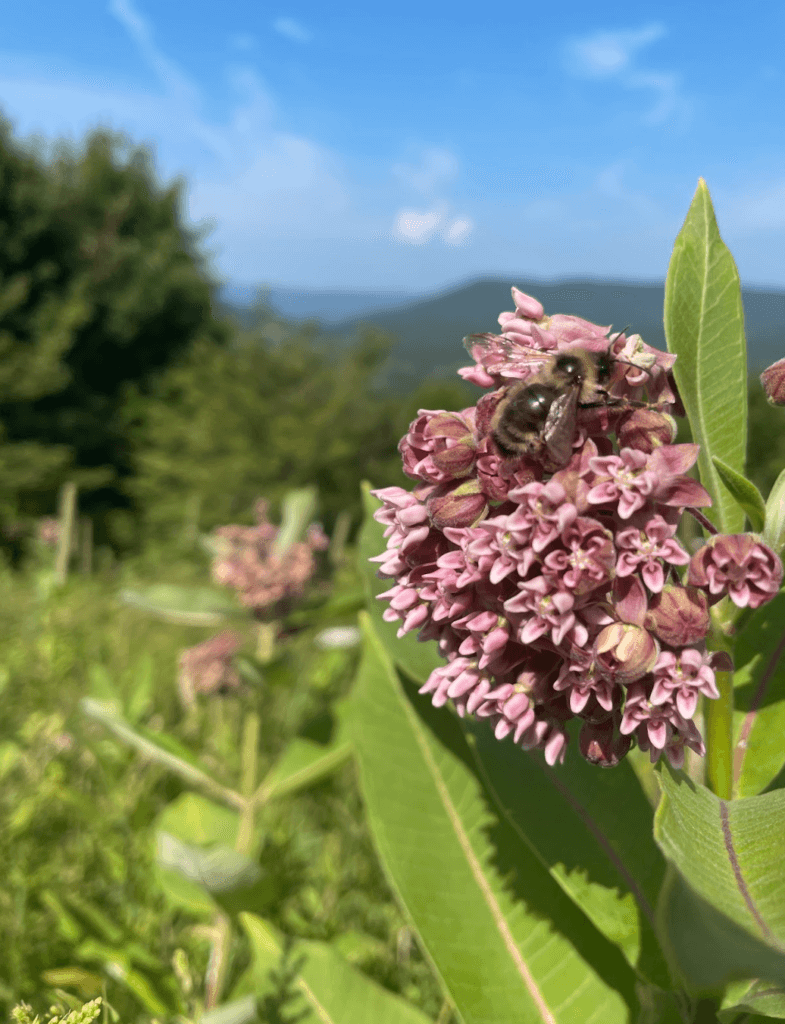
A busy bee lands on a native milkweed plant in Canaan Valley. Monarch caterpillars feed exclusively on milkweed. Planting it is a good way to support monarch butterfly populations.
Additionally, it’s important to monitor feeders. “If you do put up any kind of bird feeders or bird baths or bird houses, we encourage you to keep them clean and sterilized,” Fregonara says. “There’s a little bit of work involved. If it rains, the seed will become moldy and start sprouting, and we don’t want that to happen.” Similarly, hummingbird feeders need to be carefully maintained, for the birds’ health.
Insects, too, are a vital component of a healthy ecosystem. Important as decomposers, they also keep less desirable insects, like mosquitos, under control. They’re the sole source of food for many species of amphibians, reptiles, mammals, and birds. Notably, insects do much of the heavy lifting when it comes to pollination, so the program encourages applicants to give special consideration to pollinators like bees, wasps, and butterflies.
West Virginia’s state butterfly, the monarch, eats milkweed as a caterpillar and relies on the nectar of various flowers as a migrating adult. Wild Yard applicants are encouraged to plant native milkweed, Joe Pye weed, aster, and goldenrod. Many insects cannot feed on plants that did not evolve with them, according to Fregonara, and exotic species are often ignored by insect life. For that reason, the selection of native plants is vital to both the success of the yard and the future of pollinators. “We want to make sure that, when people are planting, they use the right seeds,” he says. “Native wildlife thrives best in a native habitat.”
Shelter in Place
One of the most effective ways to support wildlife is to simply leave the yard alone. Property owners can eschew weed killer and let native grasses grow into a meadow. Leaving leaf litter on the ground is also highly beneficial. Birds and squirrels use leaves for nesting material and find insects within it for their young. Small mammals and amphibians may shelter in it. Additionally, a host of small invertebrates overwinter in the litter, including firefly larvae.
Almost any kind of shelter is acceptable, Fregonara says, and many different species will use the same location. “If you have a rock pile or brush pile, or if you’re cutting down a tree, you can put all the limbs somewhere and just let that be. It can be kind of messy, because nature really isn’t clean.” Fallen or standing dead trees, called snags, make excellent shelter. Woodpeckers use snags as nesting areas and find abundant food in the insects that live within the dead wood. Fregonara recommends leaving a snag if it’s safe to do so.
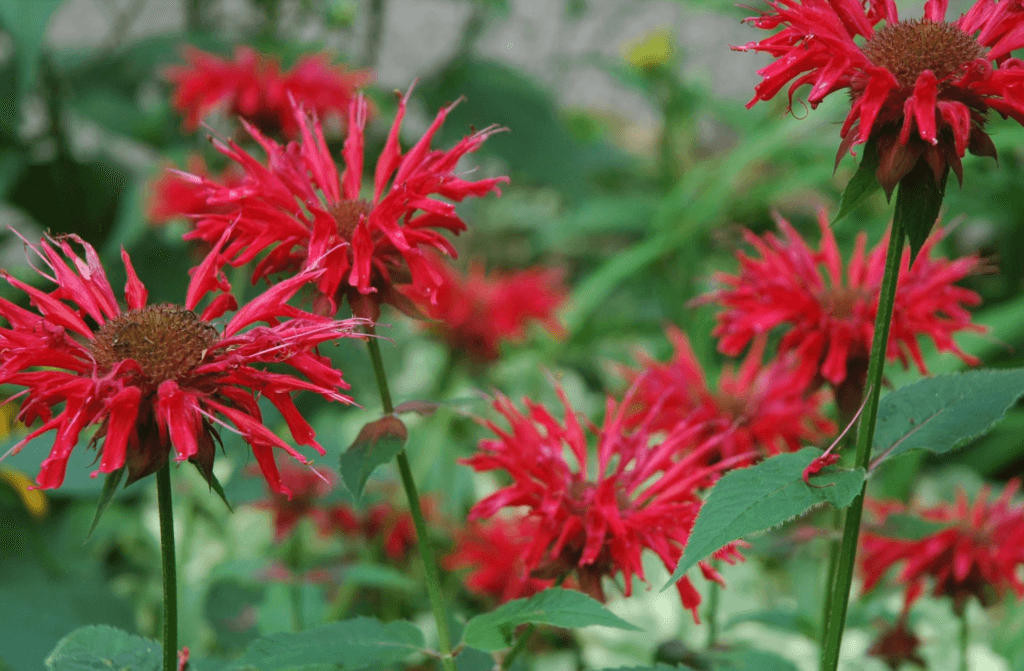
“As a tree decomposes, all kinds of animals utilize it,” he says. “Fungus and bacteria start breaking it down, and salamanders will get in there. Other insects and invertebrates like centipedes and snails and slugs will start breaking down that wood, turning it back into soil.”
Getting Certified
The Wild Yards Program makes it easy for residents to get started. The application packet includes information about wildlife habitats and how to plan for specific species. Fregonara stresses that even those with limited space—or no yard at all—can still participate by planting native flowers in pots. Applicants with little or no gardening experience will find support through the program as well.
“We ask folks to send us pictures of their property and, if they can, make a little map showing where the house is and what their land looks like,” he says. The application asks about applicants’ future plans: Will they be building a rock wall or pile as shelter for wildlife? Do they intend to plant butterfly bushes to help monarchs and other important pollinators? Will they hang nest boxes for bats or birds? Fregonara says it’s good to think ahead. The program is ongoing, and property owners can modify and improve their yards over time.
The guide contains detailed information on bird and mammal habitats, wetlands, and native plants. Residents can tailor their designs to fit their needs. A yard owner who wants to attract bats—which can eat up to 1,000 mosquitoes per hour—can use the included blueprints for building a bat house. Applicants will find similar instructions for building a pond or water garden.
A resident does not need to wait for their new habitat to mature before applying; they just need a plan for starting. Moreover, Fregonara understands that most yards won’t be perfect. “We’re pretty easygoing,” he says. “If someone sends in photographs and they’re making an honest effort, we’re not going to stomp on their dreams. We want to encourage people.” He adds that there is a similar national program through the National Wildlife Federation, though its applicants must pay an application fee. The West Virginia Wild Yards Program is free and, once certified, an applicant receives a certificate and a metal sign for their yard designating it an official West Virginia Wild Yard. They’ll also be entered into the West Virginia Wild Yards registry.
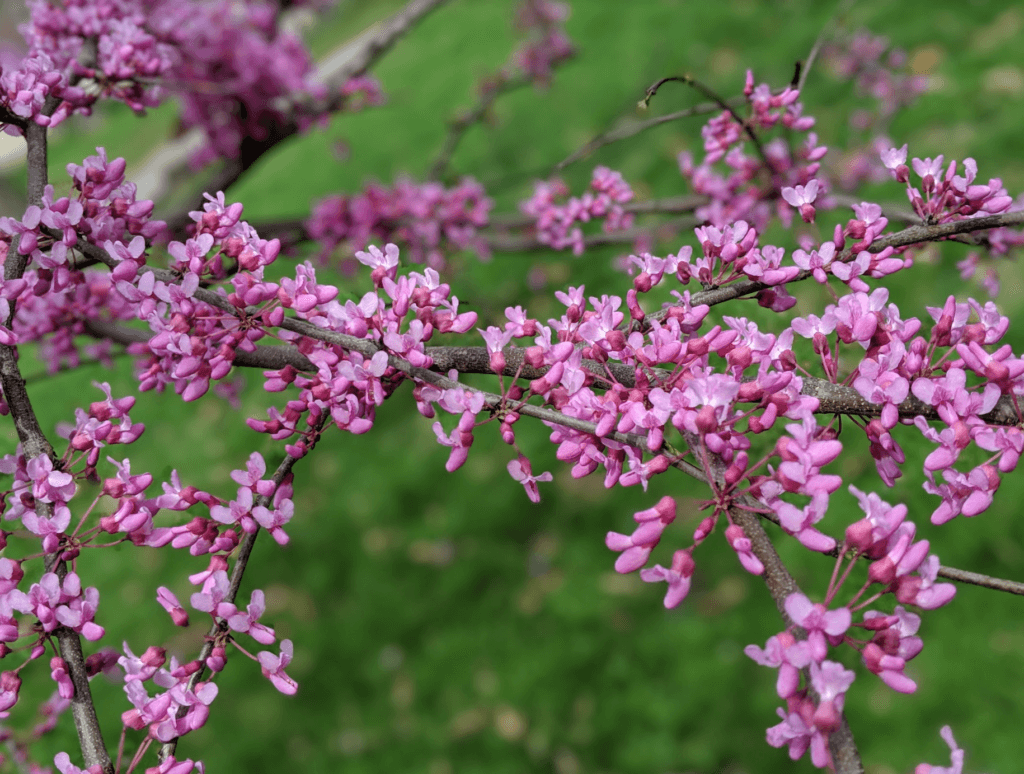
The native redbud tree flowers early and thrives in urban settings, making it a great choice for backyard habitats.
For the yard owner who doesn’t have a lot of experience with plant life, Fregonara hopes to connect with local Master Naturalists and Master Gardeners. “Some people may not know what an invasive plant is, what not to plant, what to pull, and what to leave,” he says. Ideally, West Virginians will be able to connect with local experts as they improve their properties. Fregonara says the program is also working to maintain a list of nurseries and suppliers where residents can obtain native plants and seeds.
Currently, about 300 West Virginia yards are certified wild. The DNR hopes to push the program forward. “People who can landscape for wildlife will have a better understanding of wildlife, and they’ll be better stewards of our natural resources,” Fregonara says. “There’s that old saying, ‘Think globally and act locally.’ Maybe if everyone does it, one yard at a time, we’ll make the place a little bit better for everybody.”
To request a Wild Yards information packet and application, contact the DNR’s Wildlife Diversity Program at 304.637.0245.



